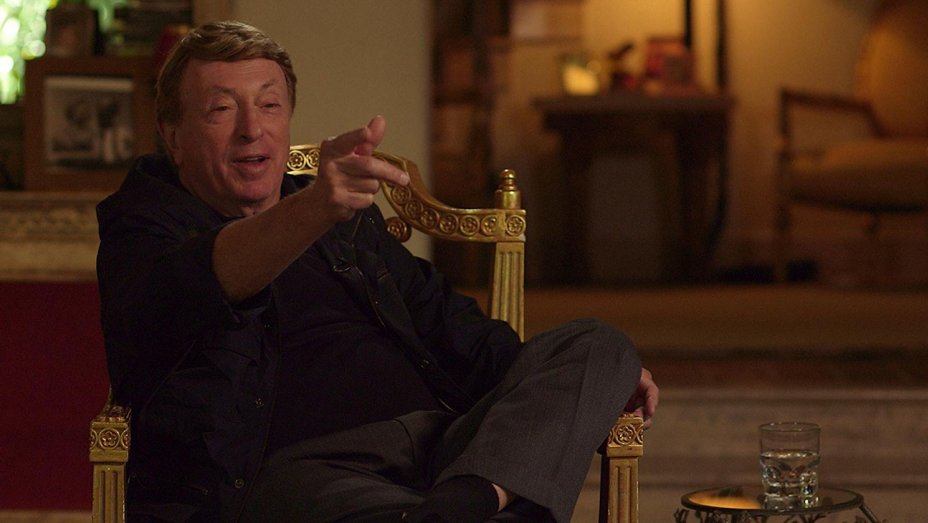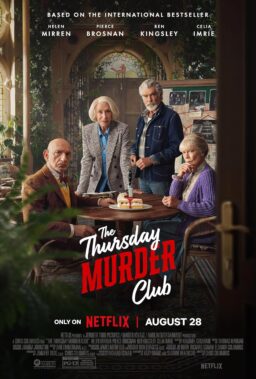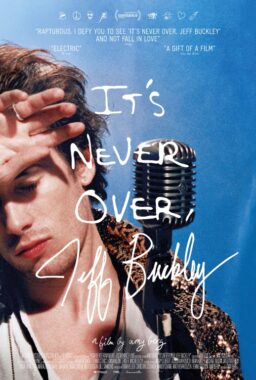Since the creators of B-movies generally do not have such luxuries as famous actors, familiar properties and large budgets to work with, they have to rely more heavily on an ingredient that is just important but much lower in cost—a great idea. Not just any great idea, of course, but the kind of idea that makes you stop in your track and think “Man, I’ve gotta see that.” The problem is that, in many cases, even if they do manage to beat the odds and come up with that killer idea, they don’t always have the resources or talent to do it justice.
One B-filmmaker who never had that problem was Larry Cohen, who passed away this weekend at the age of 77. He may have never had the same level of name recognition as such contemporaries as George Romero or John Carpenter, but his films, in which he took often outrageous premises and built upon them with witty dialogue, incisive social commentary and colorful characters, were among the best genre films of their era and continue to pack a punch today.
Cohen was born on July 15, 1941 in Manhattan and from a young age, he developed a fascination with movies. In an interview I did with Cohen a couple of years ago, he professed a special fondness for the films produced by Warner Brothers during that era. “It was a great studio—they had really ballsy movies and political movies … They were shot at a fast pace with a lot of action and fast talk, as opposed to MGM movies, which were a lot slower and more luxurious. He began his career as a writer for television, first by writing for such shows as “The Defenders, “The Fugitive” and “Rat Patrol” and then by creating such shows as the 1965-’66 Western “Branded” (sorry fans of “The Big Lebowski”) and the 1967-’68 paranoid sci-fi saga “The Invaders.” Watching the shows that he created today, one can actually see the ideas and conceits that Cohen would embrace throughout his career—especially in the mixing of standard genre tropes with sly commentary about what is going on the real world, including the blacklist and the Red Scare—coming together in distinctive ways that set them apart from a lot of what was going on in television at that time.
He then began to make the move into writing feature films in 1966 with “Return of the Seven,” a largely forgettable sequel to the hit Western “The Magnificent Seven,” “I Deal in Danger” (1966), a spy film comprised of the first four episodes of another series he co-created, “Blue Light,” and the psycho artist horror film “Scream, Baby, Scream” (1969). Later in 1969, he would come up with what would prove the first great example of his kind of audacious storytelling that would eventually become associated with his name. In “Daddy’s Gone A-Hunting,” on which he cares a co-writing credit with Lorenzo Semple Jr., Cathy (Carol White) arrives from London to live in San Francisco and immediately meets and falls in love with the seemingly nice and clean-cut Kenneth (Scott Hylands). She soon becomes pregnant but then begins to discover that Kenneth is deeply disturbed and elects to not only break up with him but to have an abortion as well. Some time passes and Cathy has now married a rising politician and given birth to their child when Kenneth turns up again with a shocking demand—Cathy must kill her baby to even the scales for having aborted his child. Channeling real-world concerns into a thriller framework, this was a truly startling screenplay (one that almost certainly would not pass muster today) and if the execution did not quite do it justice—although the screenplay required a daring test pilot of a director to do it justice, Mark Robson, fresh off the success of “Valley of the Dolls,” was strictly United material—it certainly promised better things to come in the future.

Like so many screenwriters, Cohen tired of directors messing with his material and finally moved into the director’s chair in 1972 with the bizarre dark comedy, “Bone.” As the film begins, Beverly Hills couple Bernadette (Joyce Van Patten) and Bill (Andrew Duggan) interrupt their latest round of bickering when they discover a strange man (Yaphet Kotto) on their grounds and invite him in, assuming he is an exterminator. The man, Bone, isn’t and takes the two hostage but soon discovers that his captives are not as rich as they appear to be. Nevertheless, he sends Bill to the bank to get more money and threatens to do great harm to Bernadette if he doesn’t return. While in line, Bill gets distracted by a sexy young woman (Jeannie Berlin) and decides to abandon his wife. While all this is going on, Bernadette gets increasingly drunk, seduces her captor and launches a plan for them to murder Bill and collect his insurance money. Making the most of what were presumably limited resources, Cohen devised an ingenious work that tackled racial, sexual, and class concerns in a manner that pulled no punches and got great performances from his cast to boot. Although closer in tone to something like “Who’s Afraid of Virginia Wolff?” than anything else, the film ended up being sold more along the lines of a straightforward exploitation movie—one wonders what the typical grindhouse crowd must have thought when they encountered this instead of the usual junk that they were presumably expecting.
Cohen was then contacted by Sammy Davis Jr., who wanted to do a film where he was the central character for a change, and the idea of doing a contemporary version of the Warner Brothers gangster films of the Thirties came up. When Davis couldn’t pay for the script for “Black Caesar” (1973) due to tax trouble, Cohen ended up selling it to American-International Pictures and wound up directing the film as well with Fred “The Hammer” Williamson in the lead. Charting the rise and fall of Tommy Gibbs (Williamson), who begins as a kid struggling to survive on the streets of Harlem, becomes the head of the black crime syndicate and wages a war against his enemies that leads to his downfall, the film was fairly conventional in its structure, Cohen added any number of twists that are still startling to observe today—in perhaps the most infamous bit, the adult Tommy gets the drop on the racist cop who beat him as a child when he was doing shoeshines on the street, smears the guy’s face with shoe polish and forces him to sing before beating him to death with a shine box. These wild bits, coupled with Williamson’s undeniable screen charisma and a driving soundtrack by James Brown, helped make the film a hit and AIP clamored for a sequel despite the fact the central character had definitively died.
Needless to say, that didn’t stop Cohen and by the end of 1973, he had “Hell Up in Harlem” in theaters with Williamson again in the lead. Like most rushed sequels, this is a relatively undistinguished programmer but it does contain one magnificently inspired sequence in which Tommy chases an attacker through the streets of New York that seems to end when his quarry eludes him and boards a plane taking off for Los Angeles. That doesn’t stop Tommy—he boards the next flight to L.A., spends the next few hours flying out and lands just in time to finish things up at the baggage claim at LAX.

Not wanting to be pigeonholed solely as a blaxploitation filmmaker, Cohen made his shift to the horror genre where he would achieve his greatest fame. His first effort there, and one of his most famous films, was “It’s Alive” (1974), in which he took one of the squirmier premises in screen history—a woman gives birth to a monstrously deformed baby that slaughters anyone unlucky enough to cross its path—and embroidered upon it with a narrative that managed to make its so-called monster somehow sympathetic in the manner of Frankenstein’s Monster, presented some extremely pointed commentary regarding the pharmaceutical industry (who devised the pills the mother took that presumably caused the mutation and who need the child killed in order to cover up their culpability) and included moments of jet-black humor as well as well as impressive contributions from makeup maestro Rick Baker and famed composer Bernard Herrmann. Completed in 1974, the film was released by a regime at Warner Brothers that did not get it and thus the film only received a limited release. Three years later, the film was re-released with an inspired new ad campaign (“There is only one thing wrong with the Davis baby. It’s alive.”) and became a box-office hit that would inspired two Cohen-directed sequels, “It Lives Again” (1977) and “It’s Alive III: Island of the Alive” (1987) and a 2009 remake that was so bad that Cohen claimed that the head of the studio that made it actually apologized to him for it.
From this point, Cohen embarked on a series of wildly ambitious films (especially considering the low budgets that he was working on) that continued to join together familiar genre tropes with increasingly pointed social satire and commentary. In “God Told Me To” (1976), he tackled religion with a story of a New York cop (Tony Lo Bianco) trying to solve a rash of bizarre violent crimes perpetrated by people who claim that God told them to kill and stumbles upon a cult whose leader (Richard Lynch) inspires some startling revelations about his own past and possible connection to the increasingly bizarre happenings. “Q-The Winged Serpent” (1982) involves a giant flying serpent that is flying around decapitating New Yorkers and a small-time crook (Michael Moriarty) who happens to discover the beast’s hiding place and tries to trade that information to the police in exchange for a big payday. “The Stuff” (1985) was a broad satire target crass commercialism and corporate indifference in telling the tale of a brand new dessert treat, known as The Stuff, that sweeps the country and turns those who eat it into addicts. An industrial spy (Moriarty) hired by the now-struggling ice cream industry investigates and it turns out that the Stuff is a living parasitic organism that is essentially eating the very same people who are eating it—a minor fact that those selling the substance seem blithely unconcerned with in their quest for profits. In “The Ambulance” (1990), a comic book artist (Eric Roberts) investigates the disappearance of a woman he just met—after collapsing on the street, she was picked up by an ambulance but never made it to any hospital—and uncovers the expected mad and elaborate conspiracy.
Among genre movie fans, the films that I have just cited, with the possible exception of “The Ambulance,” are justly famous, not only for the films themselves (which expertly blend the comedy and horror genres with style and ease) but for the stories regarding their productions. In “God Told Me To,” there is a scene in which someone dressed as a policeman begins to shoot up New York’s St. Patricks’s Day parade. Considering the number of elements that would be occurring, there was no way that he could possibly get the required permits to film during the actual parade and recreating it would cost far too much money. Instead, he just took his actor—a then-unknown Andy Kaufman, just to add to the weirdness—and stuck him into the parade and filmed without any permits. As for “Q,” that film came about when Cohen was fired from another movie that he was directing, a big-budget adaptation of the pulp classic “I, the Jury” and decided to conceive another movie to do instead—not only did “Q” beat “I, the Jury” into theaters, it cost only a fraction of that film’s budget and wound up being a bigger hit to boot.

Although these horror/satire hybrids would be the films that he would become most associated with, Cohen would occasionally change things up with unexpected forays into different types of filmmaking. “The Private Files of J. Edgar Hoover” (1977) was an ambitious biopic that centered on the 40-year career of the former FBI director (Broderick Crawford) but which also served as a corrosive look American history during that time. Although the budget limitations are a little more obvious this time around, the film hit more than it missed. “Full Moon High” (1981) was a sweet-natured comedy in which Adam Arkin plays a teenager in 1959 who is bitten by a werewolf while on a trip to Romania—rendered ageless by this attack in addition to the usual side effects, he returns to his old high school 20 years later to reenroll, this time posing as his son. Although it had the misfortune to come out in the midst of a mini-glut of werewolf movies (that included “The Howling,” “An American Werewolf in London” and “Wolfen”) and disappear from view, it remains a charming work that suggests what the later “Teen Wolf” might have been like if it was actually good.
Cohen then returned to his early thriller roots with two 1984 films that he shot back-to-back. In “Special Effects,” Eric Bogosian plays a filmmaker driven mad by a massive flop who accidentally films himself murdering a one-night stand (Zoe Lund). After discovering a lookalike (also Lund), he elects to make a movie about the dead woman utilizing that footage but when it gets destroyed, he becomes convinced that he needs to recreate it. In “Perfect Strangers,” a Mob hitman (Brad Rijin) discovers that a young, pre-verbal boy has seen him committing a murder and is ordered to kill the kid but before he can, he finds himself getting into a relationship with the boy’s mother (Anne Carlisle). “Wicked Stepmother” (1989) was another overt comedy but one perhaps better known for its own oddball behind-the-scenes story—after filming for a couple of weeks in the title role, star Bette Davis suddenly left the production and rather than shut everything down, Cohen rewrote things so that her character would suddenly change her appearance so that the rest of the part could now be played by Barbara Carrera.
Although it would become harder over time for Cohen the director to get work—especially since the studios were now specializing in expensive versions of the B-movies that he specialized in—he still found work as a screenwriter and his name turned up on the screenplays for such films as “Best Seller” (1987). “Maniac Cop” (1988), “Body Snatchers” (1993,” “Guilty as Sin” (1993), and “Cellular” (2004). Of his work as a pure screenwriter during that time, his best-known project is probably the 2003 hit “Phone Booth,” a thriller in which a fast-talking publicist (Colin Farrell) with a messy personal and professional life impulsively answers a call at the last phone booth in New York and finds himself targeted by an unseen sniper who threatens to kill him if he attempts to leave. Cohen originally pitched the basic idea for the film to no less than Alfred Hitchcock but it was abandoned when they could not conceive of why the guy would have to remain in the phone booth.
Cohen’s final film as a director was “Original Gangstas,” an entertaining blaxploitation revival that brought back some of the genre’s greatest icons—including Fred Williamson, Jim Brown, Ron O’Neal, Richard Roundtree and Pam Grier—to kick some young punk ass. However, while he wasn’t doing anything new, his legacy continued to flourish. A member of an informal club of genre filmmakers known as the Masters of Horror, he would go on to direct an episode of the horror anthology series by the same name in 2006. He had reportedly been working with JJ Abrams on a project anthology series for cable television.

His oeuvre returned to the spotlight in 2017 with the release of “King Cohen: The Wild World of Filmmaker Larry Cohen,” a wildly entertaining documentary in which Cohen looks back on his crazy career and which features additional testimonials from friends and coworkers as well as a slew of mouth-clips that will make you want to see the full features immediately. Among students of the genre, Cohen’s influence as a storyteller cannot be denied.
Of course, any discussion of the works of Larry Cohen at this site cannot conclude without mentioning an anecdote that Roger and others would often cite. In 1982, “Q” screened at that year’s Cannes Film Festival under the original title “The Winged Serpent.” As those who have seen the film know, the movie is largely dominated by a brilliantly out-of-left-field performance by Michael Moriarty, the kind that might have earned awards had it not been included in a film where giant creatures tear the heads off of topless sunbathers. Anyway, after the screening, there was a luncheon and the following conversation was said to have taken place between Samuel Z. Arkoff, the B-movie legend who produced “Q,” and film critic Rex “Myra Breckenridge” Reed.
REED: Sam! I just saw “The Winged Serpent!” What a surprise! All that dreck—and right in the middle of it, a great Method performance by Michael Moriarty!
ARKOFF: The dreck was my idea.
A great story, of course, but the genius of Cohen—and I do mean “genius”—was that he took concepts that others could have easily reduced to dreck and transformed them into witty, provocative works that pushed all the right buttons. As a filmmaker, Larry Cohen was a true master—not necessarily of horror alone. For film fans who have long sparked to his offbeat output, his passing will prove to be a great loss.












